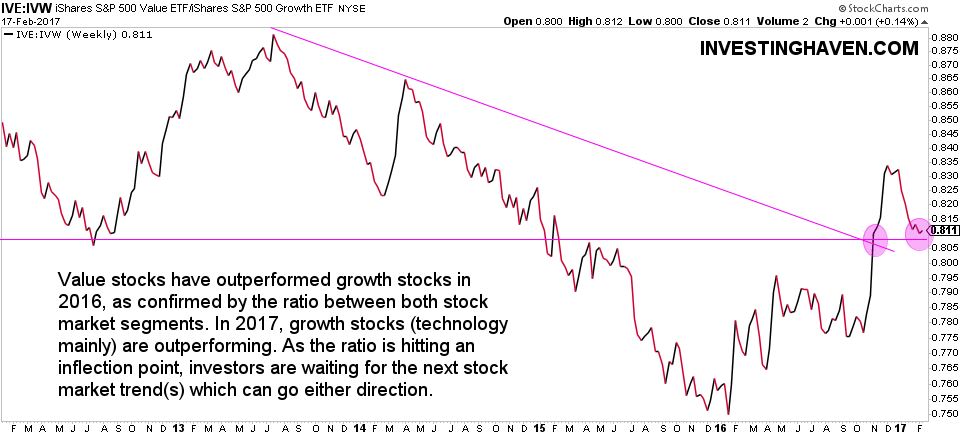Stock markets continued their rise this week, and all major indexes hit new all-time highs. Some call it the Trump effect, others call it a stock market bubble, … Whatever the name, stock markets have been bullish in the first two months of 2017, exactly in line with InvestingHaven’s stock market outlook for the first period of 2017.
So far, there are insufficient signs of a stock market crash in 2017. Obviously, markets will correct sooner or later, but the point is that a 2008-alike crash is not in the cards.
Investors are closely watching the trend in 20-year Yields. That is the primary risk indicator for markets, and it is about to test a major price point in the coming months. That implies a potential trend change. “Although primary market trends do not tend to change very fast, investors must keep a close eye on trend changes as they arise“, say analysts at InvestingHaven.com.
Stock market trend change in the air?
At this point in time, many leading markets are trading at inflection points, as explained in 5 Leading Markets At Major Inflection Points. That could suggest something is brewing, though it is too early to pinpoint a new trend.
The fact of the matter is that leading segments within the stock market also trade at an inflection point. Particularly the ratio of value vs. growth stocks is hitting a critical level, and that always warrants attention.
Value stocks are typically financial stocks, energy stocks and industrials. Growth stocks are primarily technology stocks. The ratio of value to growth bottomed in January last year, moved upward during 2016 (with value stocks outperforming technology) but is now hitting a major technical point.
Going forward, the ratio shown in below chart suggest three potential scenarios. First, value stocks could continue to outpeform which would suggest the ratio turns up again, and that would be in favor of energy / financials / industrials. Second, technology could take over the lead, which would happen if financials are stopped cold because their driver (Yields) start declining. Third, stocks in general would correct, in which case the ratio would turn down as value stocks rose very fast last year (hence a stronger correction).
Which of the 3 scenarios will occur? The key indicator to watch is 20-year Yields, the primary risk indicator for stock markets and also the key driver of value stocks (primarily financials and industrials).



